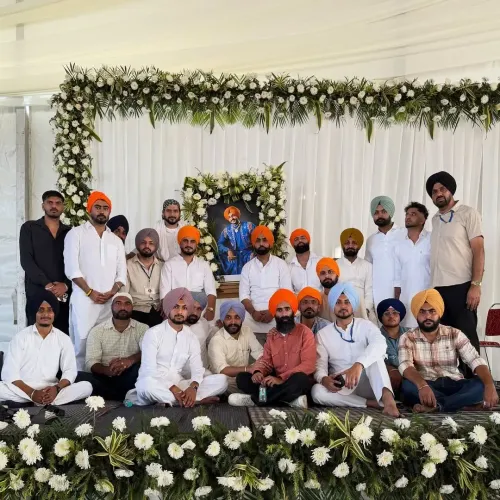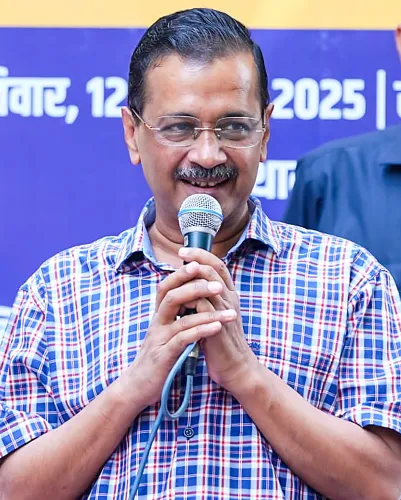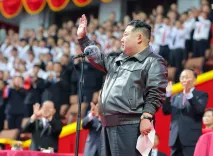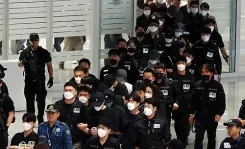Will J&K L-G Succeed in Bringing Back Lord Buddha's Holy Relics from Russia?
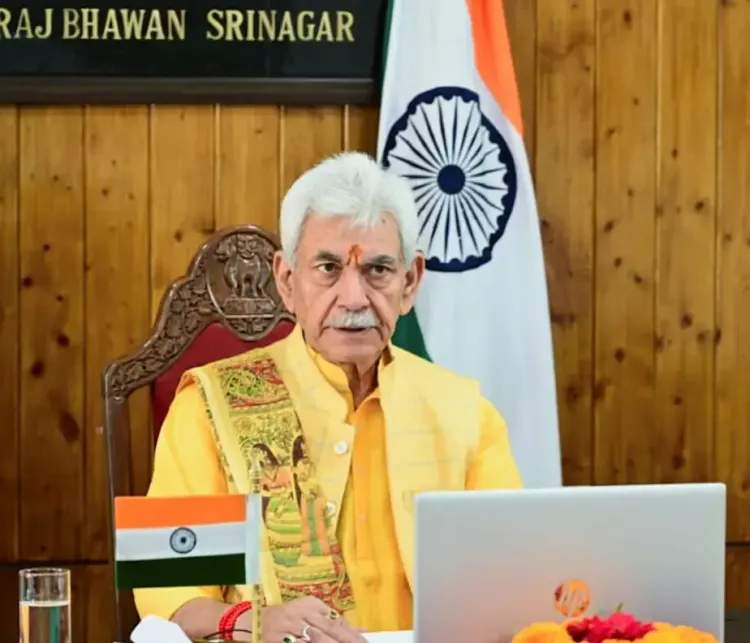
Synopsis
Key Takeaways
- Lt Governor Manoj Sinha is leading a delegation to Russia to repatriate the holy relics of Lord Buddha.
- The relics are intended for enshrinement at the Geden Sheddup Choikorling Monastery.
- India's Buddhist population is approximately 8.4 million.
- Kashmir features important ancient Buddhist sites that reflect its rich history.
- The Ministry of Culture is organizing the exhibition in collaboration with multiple organizations.
Jammu, Oct 17 (NationPress) The Lieutenant Governor of Jammu and Kashmir, Manoj Sinha, embarked on a journey to Russia on Friday with the mission of repatriating the holy relics of Lord Buddha to India.
During his trip to Kalmykia, L-G Sinha will be at the helm of a delegation tasked with retrieving the sacred relics following a week-long exhibition.
In a post on X, the office of the L-G stated, “Departing for Kalmykia, Russia, where I will lead the delegation to bring back holy relics of Lord Buddha after a week-long exposition. I express my heartfelt gratitude to the Hon’ble Prime Minister Shri @narendramodi Ji for this sacred opportunity. 'Om Namo Buddhaya'.”
The exhibition is being organized by the Ministry of Culture in partnership with the International Buddhist Confederation, the National Museum, and the Indira Gandhi National Centre for the Arts.
The revered relics are set to be enshrined at the Geden Sheddup Choikorling Monastery, the principal Buddhist monastery in Elista, which is also known as the ‘Golden Abode of Shakyamuni Buddha’.
India is home to a significant population of Buddhists, estimated at approximately 8.4 million, representing about 0.7 percent of the national population, based on the 2011 census.
Although Buddhism originated in India, it now constitutes a minority religion within the country. The largest concentration of Indian Buddhists resides in Maharashtra, with notable communities in Arunachal Pradesh, Mizoram, Sikkim, and West Bengal. Buddhism thrived in India, especially during the reign of Emperor Ashoka, but has seen a decline over the centuries.
Approximately 87 percent of India's Buddhists adhere to Navayana Buddhism, with a significant majority based in Maharashtra.
The region of Kashmir boasts numerous important Buddhist sites, such as the ruins at Harwan and Ushkur, the ancient Jayendra Vihara, and the archaeological complex at Ambaran near Akhnoor.
These sites underscore Kashmir's vital role in the dissemination of Buddhism and its historical significance as a center of learning that attracted scholars from across Asia.
The 4th Buddhist council convened at Harwan near Srinagar, under the patronage of the Kushan king Kanishka, with ancient ruins from that period serving as evidence of this rich cultural legacy.
Notable remnants and tiles featuring intricate carvings are tied to important figures such as the Buddhist master Nagarjuna.
The ancient site of Ushkur near Baramulla holds significant historical value, including the discovery of a terracotta head of Buddha during excavations. It is linked to the ancient town of Huskapura.
Another ancient Buddhist site, Jayandra Vihara, located near Baramulla, was a prestigious urban center for learning in ancient Kashmir, renowned both domestically and internationally. It served as a hub of study for foreign scholars, including the renowned Chinese monk Hiuen Tsang, who resided there for two years in the seventh century.
The archaeological site of Ambaran near Akhnoor reveals a monastic complex that sheds light on the evolution of Buddhist culture in the region, with evidence of its use dating from the 2nd century BCE to the 7th century CE.
Parihaspur, located just outside Srinagar, was a monastery established by King Lalitaditya of Kashmir, celebrated for its colossal image of Buddha.


